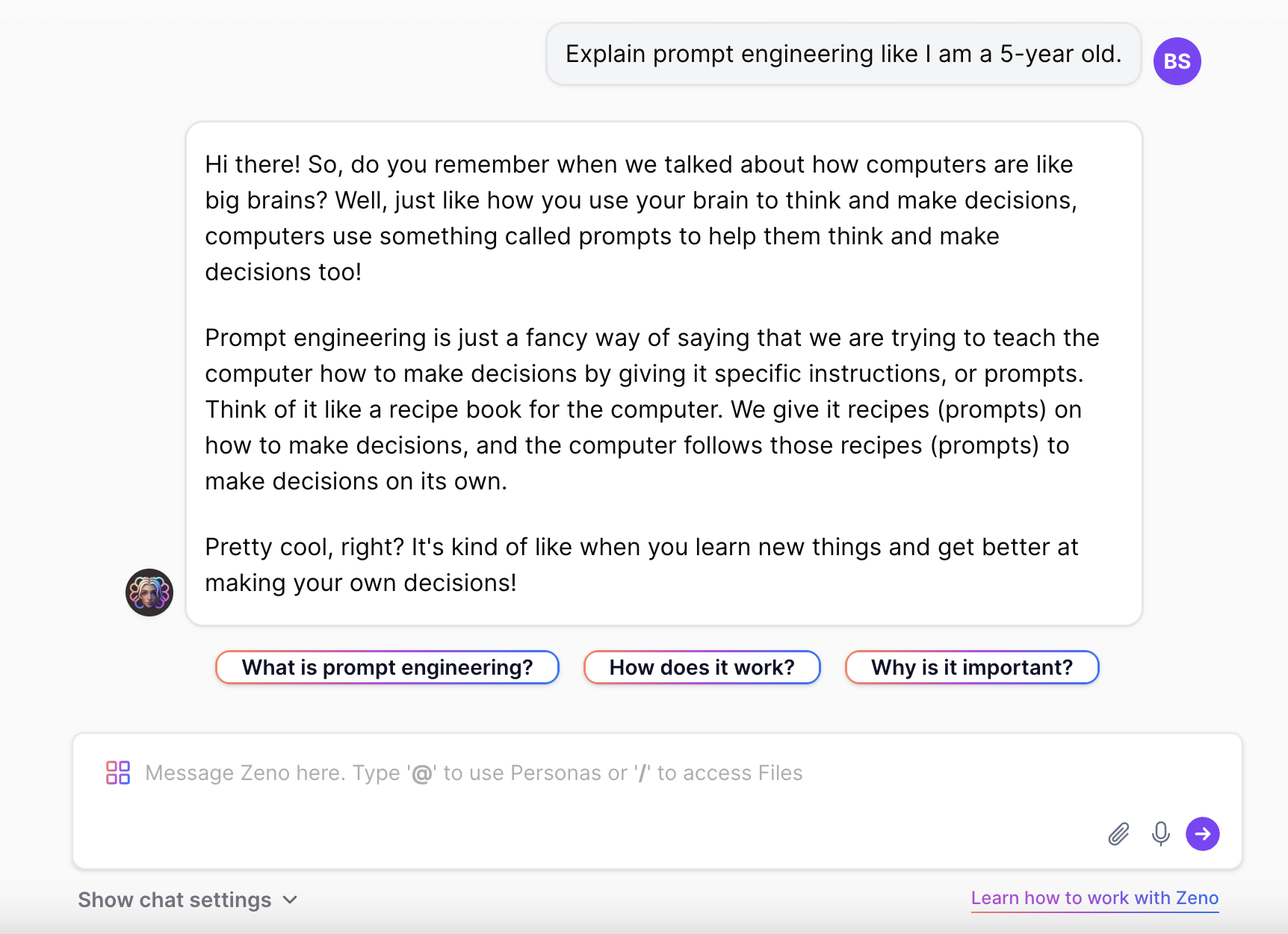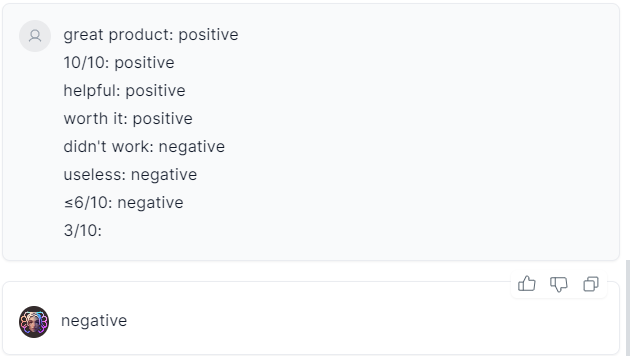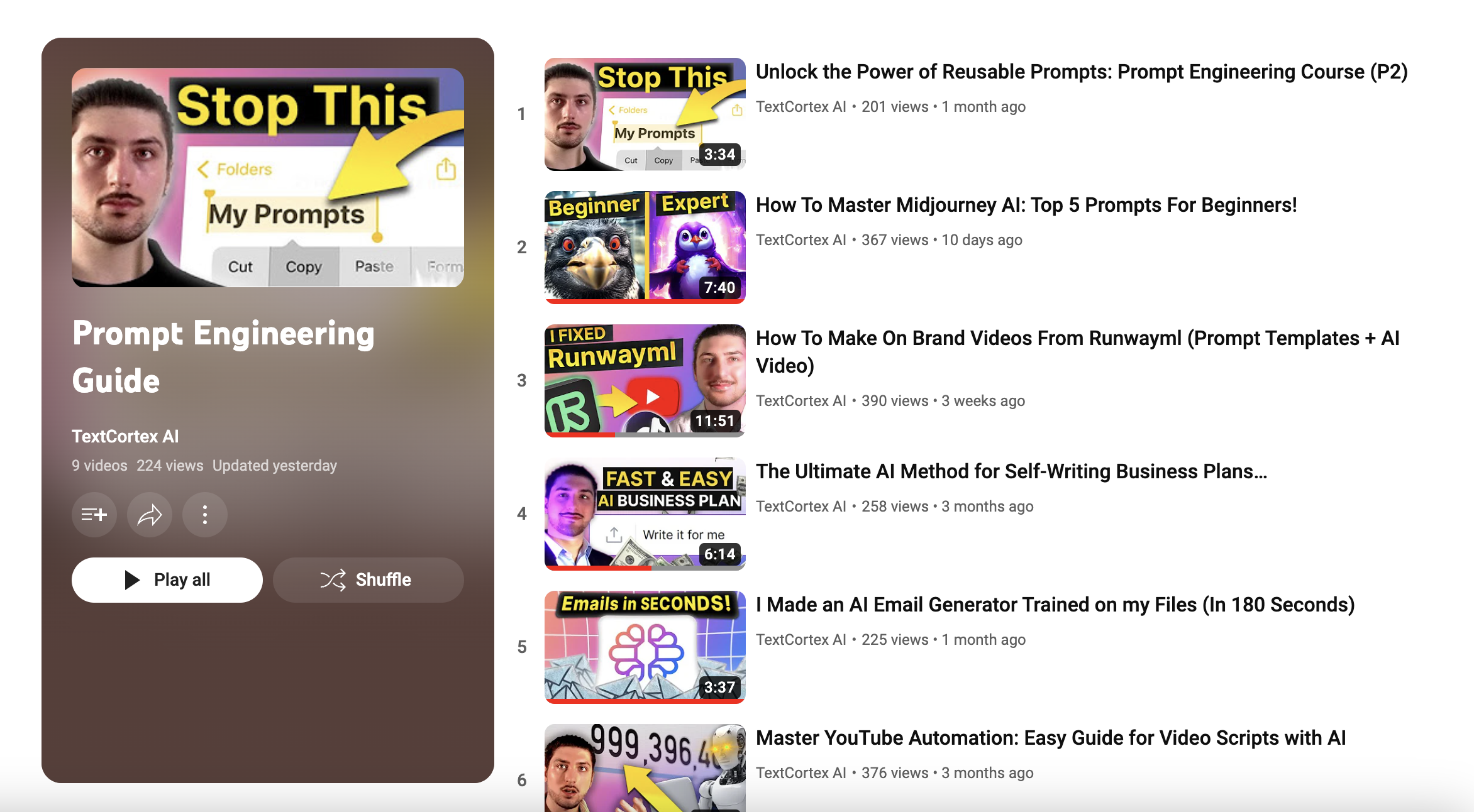While the development of AI technology has benefited many sectors, it has also created new business opportunities. The most significant business sector that comes with AI is prompt engineering. Prompt engineering is a sector where you need to improve your ability to effectively control AI tools. So, you can significantly increase your understanding and creativity on the LLM.
In this article, we will explain what prompt engineering is and how you can learn prompt engineering.
TL;DR
- Prompt engineering is using techniques and patterns to use AI models effectively.
- A well-crafted prompt consists of four parts in total: input/context, instruction/question, example, and output format.
- You can improve the output quality by using concise and clear statements in your prompt and providing relevant data.
- One of the most effective prompt engineering techniques is the few-shot learning method. With this method, you can train AI models to generate the desired output.
- When crafting your prompt, you must specify the output format such as list, article, question, poem etc.
- By customizing AI models, you can tailor their output style and knowledge base.
- To learn the basics of prompt engineering, you can check the TextCortex Prompt Engineering Guide and Coursera Prompt Engineering Specialization.
- To improve your prompt engineering skills, you can use resources such as YouTube, blog posts, and Reddit and practice them with AI models.
What is Prompt Engineering?
Prompt engineering means carefully crafting and fine-tuning your prompts to use AI tools effectively. By improving your prompt engineering skills, you can ensure that AI tools generate the outputs you target. As you improve your prompt engineering skills, you can increase your output generation speed and use AI tools with maximum efficiency.

Before you can level up proficiency in specific AI tools, you need to learn the basics of prompt engineering. This way, you can guess what to do when crafting prompts for any AI tool. If you want to increase your prompt engineering skills in an AI tool, you must first understand the parameters of that tool.
What is a Prompt?
A prompt is input, and requests provided by the user for AI tools to generate output and operate. A well-crafted prompt consists of four basic parts:
- Input/Context: The Input/context part of the prompts allows the AI tool to understand the user's intent. It can be a transcript, article, PDF, website, etc.
- Instructions/Questions: This is the command that the AI tool needs to generate output. It can be a translation command or a question about any topic. Also, it can refer to the input/context of the prompt.
- Example: The example part of the prompt refers to training the AI model with specific data before giving the final instruction. Additionally, the example part of the prompts is also called few-shot learning.
- Output Format: This is the section where you specify the format in which the AI tool will generate output. It can be an article, poem, essay, blog post, product description, meta tag, social media post, etc.
You don't need all the parts to craft a prompt, but at least you need an instruction or question to get a proper output. However, the more detailed you use these parts in your prompt, the more precise output you can get.
How Does Prompt Engineering Work?
Prompt engineering is the process of designing the behaviour and output generation of AI models with specific instructions, examples, and data. Prompt engineers craft prompts, which are a method of communicating with AI models, according to user intent and purpose. Thus, users can communicate smoothly with AI models and get the desired outputs precisely, clearly, and quickly.
Prompt Engineering Techniques
Prompt engineering means feeding AI tools with well-crafted prompts to perform specific tasks at a high quality. There are different techniques and approaches you can use in prompt engineering, and each technique comes with its own advantages and disadvantages. We recommend that you learn the basics of prompt engineering before learning about prompt engineering techniques.
How to Craft Effective Prompts?
When crafting a prompt as a prompt engineer, you need to understand the basic formatting of a prompt. If you want to craft an effective and content-focused prompt for any LLM, there are steps you need to follow.
Use Direct Instructions
When crafting a prompt, you should always provide as clear and concise instructions or questions as possible. In other words, your prompts should always directly tell the AI model what to do. For this reason, you should avoid ambiguous expressions in your prompts and clarify the desired output.
Provide Relevant Information
While LLMs generate output, they primarily use the information and data you provide in the prompt as context. Moreover, by adding context to your prompts, you can enable AI models to generate better, clearer, and more accurate responses. For example, you can input articles on any subject as context and ask the LLM to summarize, translate or paraphrase them.
Utilize Few-Shot Learning
Few-shot learning is one of the most effective methods of training any LLM before using it for final tasks. Few-shot learning means AI models practice with related examples to complete a specific task. Thus, you can enhance it to a stable and concise form for the target task. In short, few-shot learning is a training method used in prompt engineering and enables the AI model to recognize the target task.

Specify Output Format
We recommend that you always specify the desired output format when crafting prompts for AI models. This way, you can be sure that the outputs always have a particular format. Depending on the task of the prompt, you can specify the output in various formats such as a list, article, short answer, yes/no, negative/positive, or poem. Although this is just a small piece of advice for prompt engineering, you should always keep it in mind.
Customize the AI Tool
You can make your prompts work more effectively and concisely by customizing the output style, tone of voice, and knowledge base of the AI tool you are working on. By customizing the knowledge base of the AI tool, you can prevent it from generating misleading and inaccurate output. By building the AI tool's persona, you can control its sentence length, output style, and tone of voice as you desire.
Although it is not possible to customize every AI tool, you can add specific persona descriptions and data to your prompts. Thus, the AI tool can avoid hallucinating responses and use the tone of voice you want when generating output.
How to Learn Prompt Engineering?
Prompt engineering, like all other mind works, is a skill that you can develop with practice and experience. You need to try various prompts in different LLMs, analyse the results and enhance your prompts to get better output. But if you are starting prompt engineering from scratch and don't know what to do, there are courses that will be your compass. Let's take a closer look at the best prompt engineering courses that help you to build a base.
TextCortex Prompt Engineering Guide
TextCortex, your customizable AI copilot, offers a prompt engineering guide for those who want to learn the basics and hacks of prompting. With our prompt engineering guide, you can learn the basics of prompting and understand the logic of any AI model. Click here to visit our prompt engineering guide videos on YouTube.

Moreover, our conversational AI, called ZenoChat, has a persona developed for prompt engineering tasks. With this persona, you can enhance your prompts or generate content-focused prompts from scratch.
Coursera – Prompt Engineering Specialization (Beginner Level)
If you are looking for a beginner-level prompt engineering course, you can check Coursera's Prompt Engineering Specialization course series. This course covers prompting techniques for generative AIs, prompt engineering patterns, and effective generative AI leveraging approaches. It is available in 19 languages.
Other Sources
Since prompt engineering is a new sector, the sources where users share their experiences are an effective method to learn. You can improve your prompt engineering skills by using external resources such as blog posts, prompt libraries, and YouTube videos. You can also learn and test prompt engineering techniques using AI chatbots.

%20(28).png)
%20(13).png)
%20(12).png)
%20(11).png)